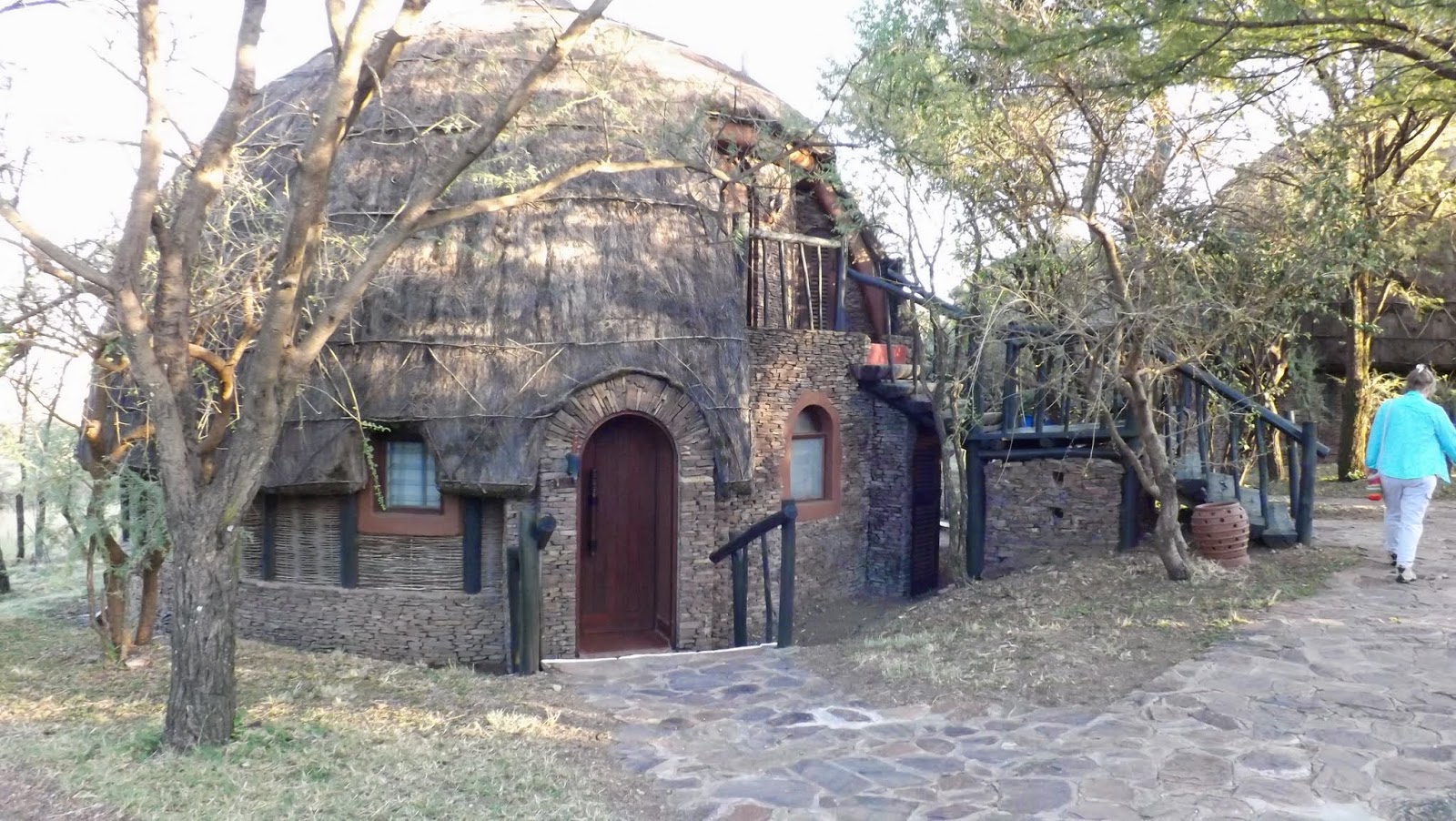Lions, leopards and cheetahs may be the stars of the Serengeti but it is the Wildebeest Migration that makes their stardom possible. There are estimated to be well over a million Wildebeest that move from northern Tanzania to southern Kenya and back on their annual migration.
The exact number is unknown, the last official count nearly 20 years ago put the number of wandering Wildebeests at 1.6 million. Our guide told us the number today is probably 2 million. Add another 200,000 zebras and 400,000 Thompson and Grant's gazelles and you have the largest concentration of mammals anywhere on earth.
The wildebeest are following the rain that feeds the grasses they depend on. The herd concentrates in the southern reaches of the Serengeti during the rainy season, dropping their calves almost as on cue just as the rain arrives. By the time the rain stops in late April, early May the calves are strong enough to keep up with the herd as it begins to move north towards freshening grass and reliable water sources that will get them through the dry part of the year in September/October.
And following the migration is a fleet of safari operators, employing thousands of Tanzanians and Kenyans in good paying jobs as Guides, lodging employees and supporting staff. A fleet is an understatement. I counted over 500 registered tour operators on the official Tanzania Tourism website.

And all this tourism infrastructure is in place to put you in the best position to see one of the most impressive spectacles in the natural world. To witness the Serengeti ecosystem as it has existed for the last million years; to experience the circle of life.

We can thank the British and the nascent Tanganyika government for setting aside the lands encompassing the Ngorongoro Conservation Area, Serengeti National Park and a half dozen other game reserves and controlled areas surrounding the park; allowing the free movement of wild animals, the ebb and flow of the seasons; the interaction of hunter and prey; the minute by minute mini-dramas played out by the actors on this stage.
European storks will soon migrate north to spend summer in Germany.

The beautiful grey crested egret.
Susan enjoys the open air view, 360 degree surround sounds and animal show.
Over a million wildebeest on the move heading north towards Kenya.

The bleating of thousands of wildebeest turns the Serengeti into a song of life. Click on this link to hear the wildebeest.
The dominant bulls are constantly forced to hold their haremn together against challenges by young bucks.
And of course, the migration is under constant threat of predation by lions, cheetahs and hyena.

Scavengers, like this marabou stork, are ready to help clean up the carnage.
Helped by griffon vultures...

and the occasional steppe eagle...
...and martial eagle.

Common eland and wildebeest keep an eye out for predators.
While we stopped to enjoy our box lunch a thunderstorm blew up...
...and dumped serious amounts of rain

...causing the river to rise, and rousing the Nile crocodiles to watch for a meal to be swept downstream.
This croc parked himself directly downstream from the river ford we hesitated to cross. We convinced our driver we didn't want to become his meal and turned around and headed back the way we came.

It was a short-lived storm, enough to water the grass and muddy the road.

Hundreds of wildebeest emerge from the bush following a faint trail. Seems like random wandering, but there is actually a leader who seems to know where he is going, while the others follow faithfully. Click for the youtube video...
The wildebeest migration drive ended our Serengeti safari and we said good-by to the Masaai inspired lodge...
and our driver Stephen. I can earnestly recommend our Safari company, Leopard Tours
We boarded a small prop plane at the Serengeti airstrip...

...and flew on to Zanzibar for a week of scuba diving. The Serengeti filled us with so many incredible images of the Maasai people, wild places, wildlife, enough to fill our memories of Africa for a lifetime. We hope to return one day, and hope you too have an opportunity to witness this special place. It is truly something you will never forget.
I would also like to thank Madelein Norval at Africa2Go for finding some outstanding values among the unlimited travel choices within Africa. Her expertise was invaluable. Email: Madelein.Norval@africa2go.com
I am also happy to share travel planning tips. Just email me or leave me a comment on this blog and I will respond.
Rodney and Susan Raub

















Thanks Rod. Really enjoyed. Elly
ReplyDeleteGood
ReplyDeleteGreat post and I really like to read this. You explained very well about animals. To see more wildlife then book Tanzania great migration safari with us
ReplyDelete